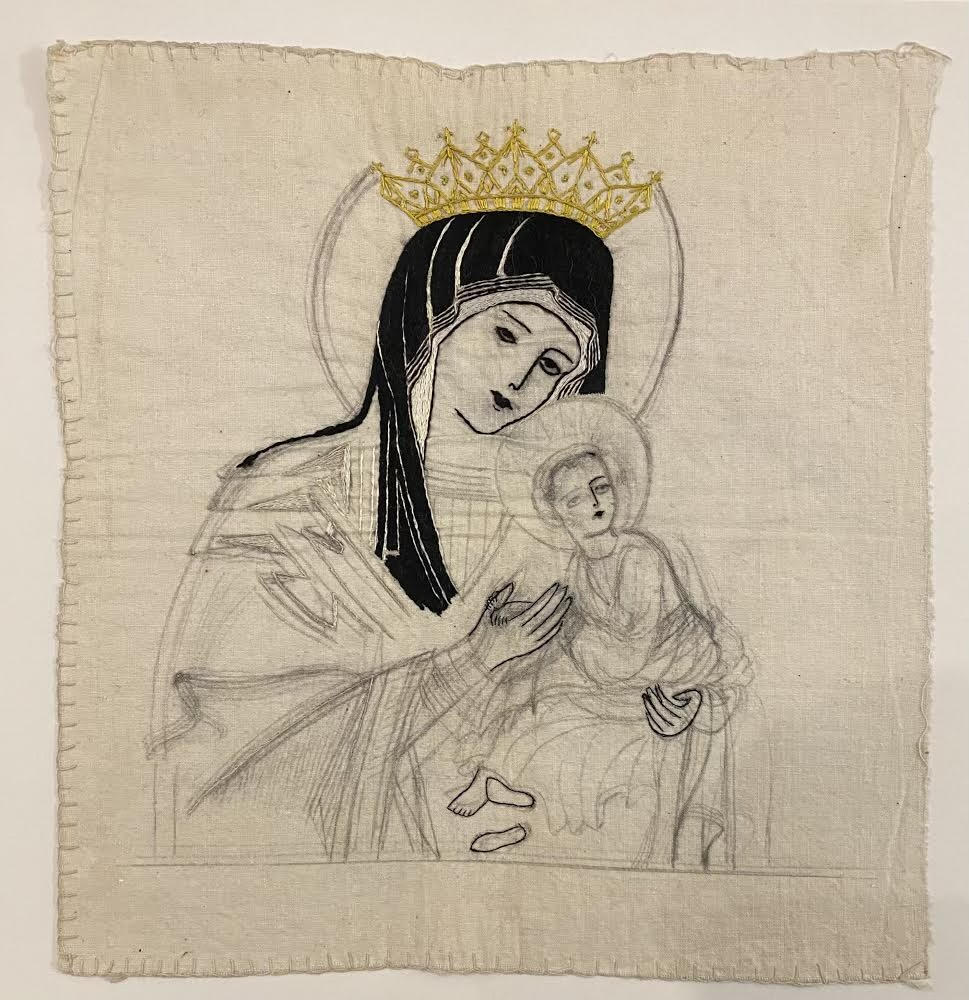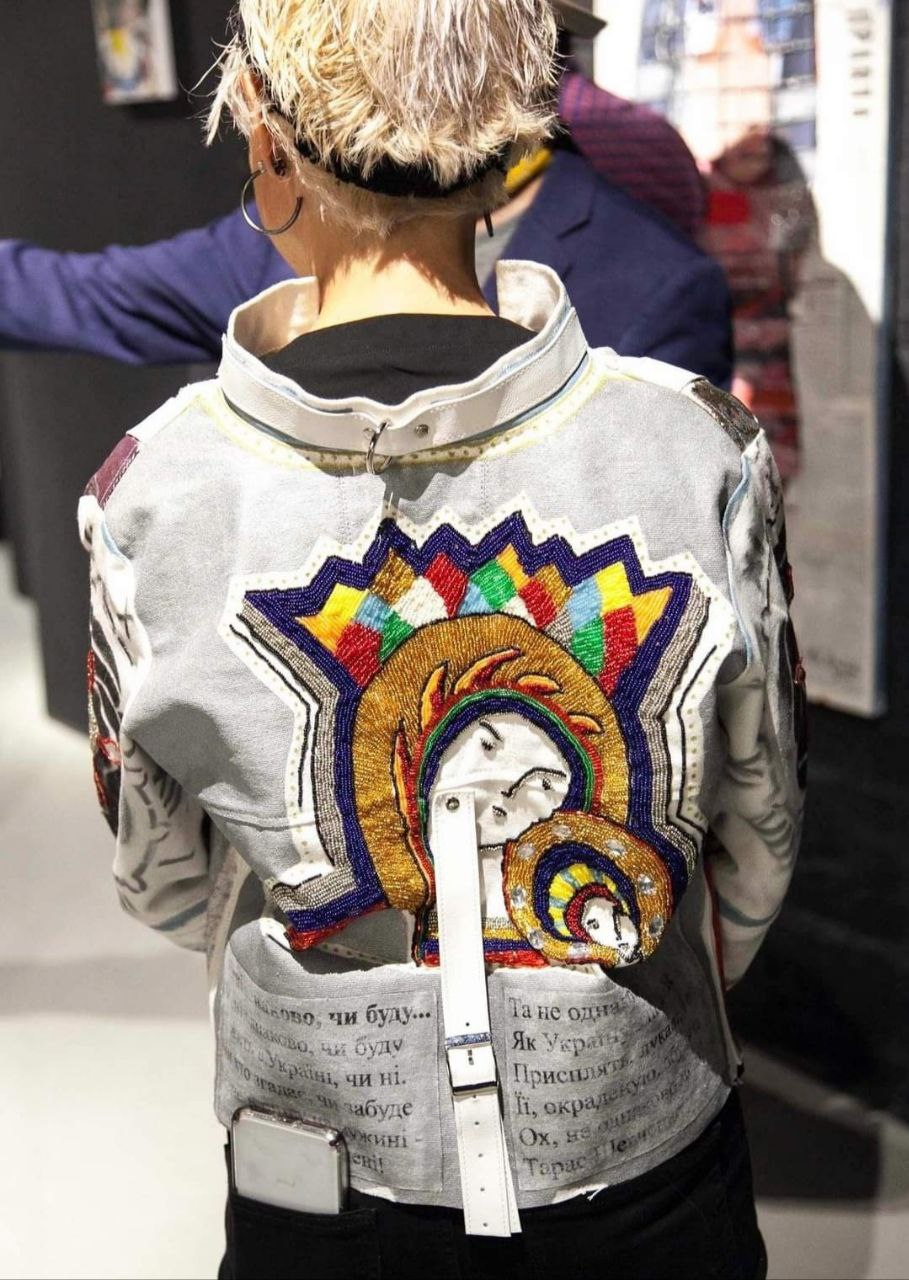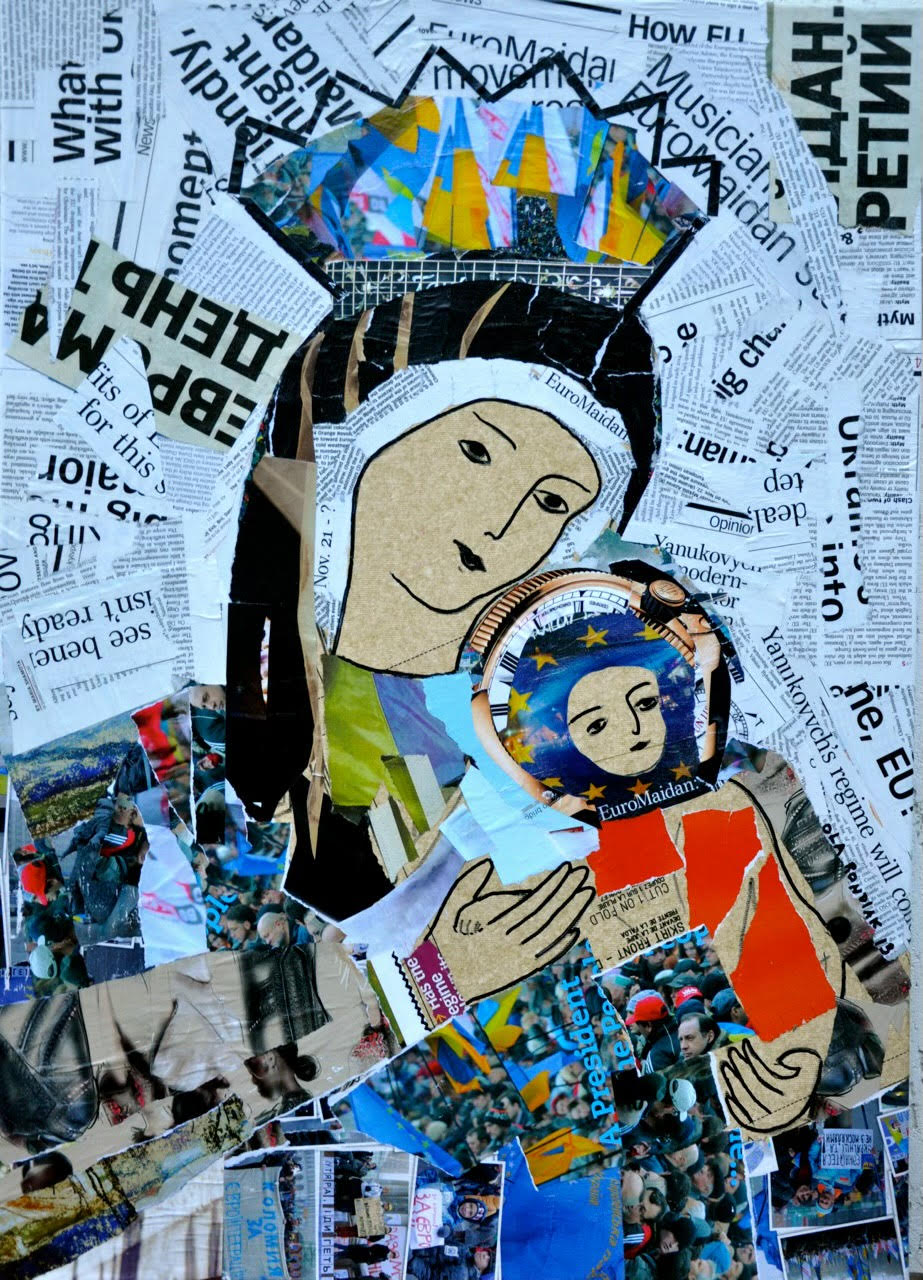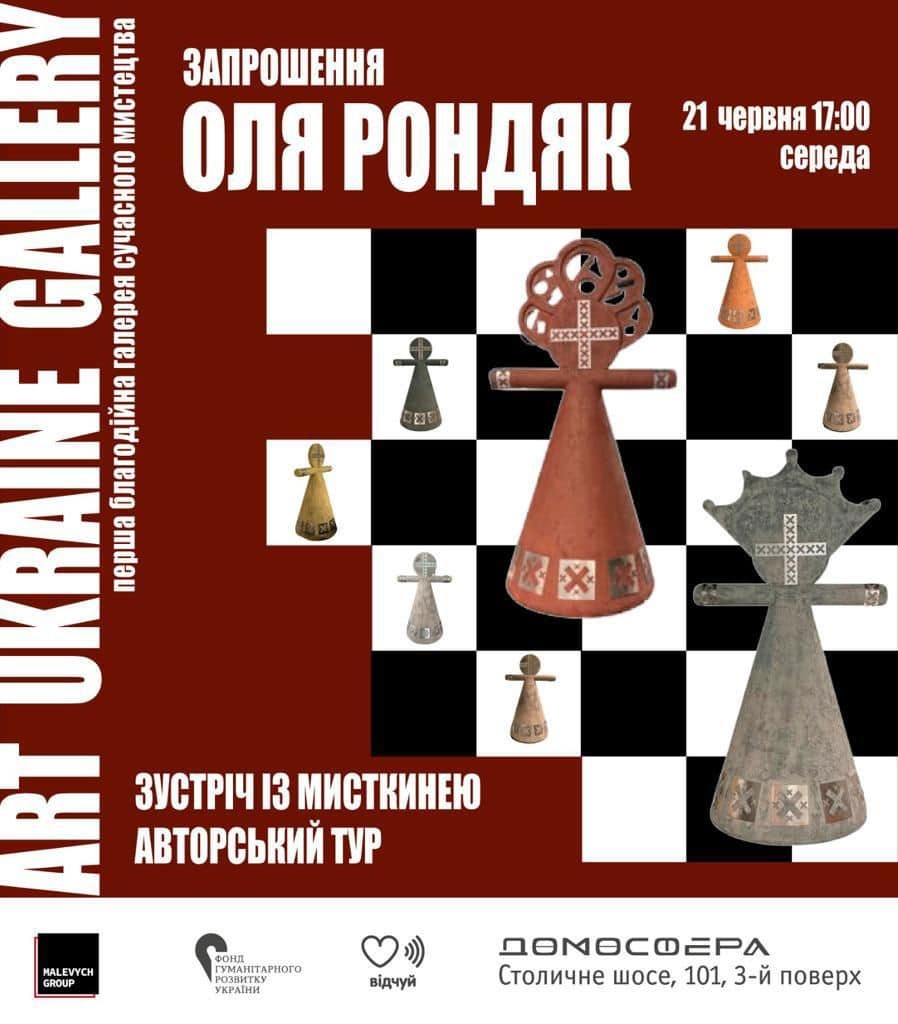The Ukrainian diaspora, scattered around the world, is a truly unique phenomenon in the culture and history of Ukraine. People who were born in a foreign land have a special sensitivity and respect for their roots, are eager to explore and cherish the culture of their ancestral land, and are usually ardent fighters for the recognition of their own Ukrainian identity.
All of this can be said about Ola Rondiak, a renowned American artist of Ukrainian descent who was born and raised in emigration. The incredible story of a family of Ukrainian intellectuals repressed by the Soviet regime, which Ola shared with Kyiv Post readers, is deeply moving.
JOIN US ON TELEGRAM
Follow our coverage of the war on the @Kyivpost_official.

Olga Rondiak with her children and husband.
Ola Rondiak shares:
«In 1949, using fish bones as needles, threads pulled from clothing, and potato sacks as fabric, a woman named Paraskevia, while in the Gulag, secretly embroidered beautiful works of art. She was sentenced to 25 years of forced labor in a high-security women's colony in Mordovia, Russia, for her faith in Ukraine and its right to exist.
Before the Second World War, she and her husband Roman were teachers. They raised their three children in western Ukraine in the beautiful city of Kolomyia, which, like many other cities in Ukraine, is a homeland to the unique Ukrainian ethnic culture.
Paraskevia and Roman were my grandparents. Their daughter Ola was my aunt, I was named after her, and their younger daughter Maria-Oksana is my mother.

IMF Approves $1.1 Billion Loan Disbursement to Ukraine Before Trump Inauguration
The Second World War tragically divided my family. Due to the brutal persecution of the intellectuals by the Bolsheviks, my grandfather, upon being imprisoned, was forced to escape.
My 11-year-old mother escaped with him, and my grandmother stayed behind to look after their sick daughter, Ola, who soon passed away at the age of 19 in my grandmother's arms.
As it turned out, my mother ultimately saved my grandfather - when the soldier put a gun to his head, she rushed out, grabbed his leg and convinced the soldier to let him go. That's how our long journey of emigration began.
After a year-long journey on foot, my mother and grandfather became refugees in an Austrian camp for displaced people. They spent 4 years there before a sponsor invited them to America. So my mother, at the age of 16, along with many other immigrants fleeing political persecution, found herself on a ship bound for Philadelphia.
Life was tough for them; the family was divided, without money or knowledge of the English language. My grandfather, a respected professor in Ukraine, was forced to work as a dishwasher in a hospital. Despite losing the status and prestige he had built up in Ukraine, he was grateful to be able to work and live in the free world.
I was born into a family of Ukrainian immigrants in the suburbs of Cleveland, Ohio. In America, starting from childhood, it was absolutely natural for me to tell everyone that I was Ukrainian. My parents considered it very important for us to learn the Ukrainian language, history and culture. There were strong Ukrainian communities in all major American cities.
I attended a Ukrainian school on Saturdays, a Ukrainian church on Sundays, and Ukrainian "Plast" camps during breaks. My parents felt a deep sense of duty to preserve Ukrainian culture. Ukraine as I knew it became a very important part of my identity.
In 1980, when I was fourteen, my mother received a package from Chicago. It contained an article from the Chicago Tribune titled "From Soviet Prisons - with Hope". The article described how my grandmother used to embroider in the camp. The letter was accompanied by several embroideries that she smuggled out of prison when she was released in 1956, when Khrushchev granted amnesty to political prisoners who suffered from Stalinist repressions.
Olga's Grandmother unfinished icon.
Unable to reunite with her family in America due to the Cold War, my grandmother returned to Kolomyia, and began corresponding with my mother and grandfather (albeit under the strict supervision of "postal" censorship). Before her death in 1975, she entrusted a tourist who was returning to America with her embroideries, asking him to deliver them to my grandfather. With the help of the Ukrainian diaspora, they eventually found their way to my mother in Ohio.
These embroideries powerfully connected me with my grandmother and, even more so, with Ukraine. They symbolized faith in God and faith in a free Ukraine. With remarkable perseverance, she created them, risking everything in the light of the northern white nights. And she hoped that the embroideries would eventually fall into the hands of her loved ones.
They were much more than just embroidery, they were a symbol of the fight for a free Ukraine. Their spiritual meaning was very clear to me, they were a reflection of the indescribable beauty of Ukraine and its timeless culture.
The unfinished icon was one of the embroideries that made the strongest impression on me. It seemed to speak volumes. It reflected the tragic fate of our family, as if it told the story of separation, of the camp for displaced people, and the Gulag camp where it was created. It carried the pain of multiple generations, connecting me with my grandmother and aunt whom I had never met.

However, despite all this pain, the icon strengthened my hope, making me feel included in their journey so I could continue my own with dignity.
After Ukraine gained independence, in the very first year of our life together, my husband and I moved to Kyiv. We wanted to reconnect with our roots and finally reunite with the members of our family who had remained here.
Initially, we planned to live here for a year. Now that we've lived here for 25 years and raised three children, we feel even more deeply connected to Ukraine. Over this time, we have travelled extensively with our children all around Ukraine.
Our children got to know and developed good relationships with their cousins, aunts, and uncles. We witnessed how a free and independent Ukraine grew into a strong European democracy.
We joined the Orange Revolution in 2004, when hundreds of thousands of Ukrainians protested against election fraud orchestrated by pro-Russian forces aligned with Kuchma. The voice of the free people returned Ukraine to the path of freedom, openness, and European values. It was one of the crucial stages in the affirmation of Ukrainian identity.
- Olga's children on Maidan. Kyiv 2013.
And in 2014, we joined the Revolution of Dignity. Participation in these two revolutions helped me better understand the unique features of the Ukrainian character and worldview.
Somehow, intuitively, right before the Revolution of Dignity, I started collecting newspaper and magazine articles that covered the topic of Ukrainian self-awareness. I created a contemporary version of my grandmother's unfinished icon from the Gulag. I used newspaper clippings to make a collage around this icon, which in retrospect was an organic way to capture and express the chaotic emotions of the moment. This icon-collage, which I named "Mother Revolution", became a vivid symbol for me. I would like to remind you that my grandmother's icon was unfinished, and I believed that its completion meant that Ukraine had finally become a truly free and independent state.
"Mother Revolution" - icon by Ola Rondiak 2013-2014.
It was a defining moment of my life. As my children grew up and became more and more independent, I was able to focus entirely on my artistic work. I take the artist's responsibility to society very seriously. With the completion of my grandmother's icon, I underwent some sort of transformation. Her voice seemed to enter my consciousness, and I could hear her loud and clear. Now it was my turn to speak loudly for and with the Ukrainian people, as well as for women around the world.
My grandmother, her strength and perseverance, have become a source of inspiration for me. The fact that she lost everything, was forced to do hard physical labour in prison, and yet had the strength to create embroideries is my source of faith and renewal.
I started creating contemporary women's portraits, which for me serve as a metaphor for Ukraine and its brave, free spirit. In addition to painting, I create sculptures called "motankas". These authentic Ukrainian dolls made of fabric have always fascinated me. The sculptures I create are symbolic defenders of Ukraine against its enemies, capable of healing Ukrainians from the pain that has accompanied them through generations.

Over the centuries, many people have given their lives for the freedom of Ukraine, including the Heavenly Hundred and thousands of Ukrainians killed in the current war. My motanka sculptures are made of Parisian plaster, which is commonly used for healing broken bones.
Today, in 2023, we are suffering from an unprecedented escalation of the war that Russia unleashed against Ukraine in 2014. Ukraine has once again faced genocide, including cultural one, and this pain will be felt for several generations. I firmly believe that art heals and unites people. It connects me to the history of my family, to my Ukrainian roots, and it compels me to take action and reminds me of my duty to keep the culture alive.
This complex connection with my ancestors gives my life a deeper meaning. My grandmother was able to pass on her artistic talent to me and taught me that my art is an expression of something much greater than myself. I came to understand not only how strong my grandmother was, but also how powerful art is in helping us endure pain and nurturing the soul.
That's why today I am creating art with hope and faith, just like my grandmother did 75 years ago. I hope that my story illustrates the importance of art in preserving culture and national identity.

The story of Ola Rondiak not only highlights the extraordinary importance of art for an individual but also demonstrates the profound strength of the Ukrainian nation and its significance for world culture. The artist returned to her homeland at the time when Ukraine gained independence. She began painting during the Revolution of Dignity, and the war added special meanings to her work.
Curently, Ola creates portraits of Ukrainian women as a metaphor for Ukraine, which she displays at exhibitions to raise funds for charity. Her incredible installations of 3-metre tall Ukrainian motanka dolls, which she calls "The Army of Motanka Amulets", are currently captivating charity vernissages in Kyiv with their energy. And this is just the beginning, because Ola Rondiak has not only solved the secret code of the Ukrainian nation, but she herself is its undisputed carrier, and this code is an infinite love for Ukrainian culture.

You can also highlight the text and press Ctrl + Enter







